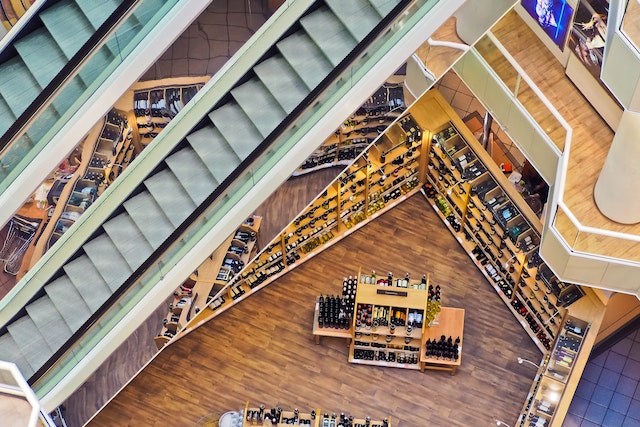
When was the first department store? It was most probably Harding, Howell & Co’s Grand Fashionable Magazine, which opened in 1796 in London.
The first department store came about with the growing Industrial Revolution. Before then, rural towns would have a general store and maybe a market. Cities would have general stores and probably markets, but there was no way to freeze foodstuffs so they would have to be brought in daily by the farmers. A general store would try to stock up on all of the things people generally needed, but there wouldn’t be an enormous number of things sold.
The first department store arose because of a change in the way people shopped. Before the Industrial Revolution, people with money would have everything they needed brought to their houses by merchants. They would have staff to deal with those people and they would have no interaction. Clothes were a different matter because they had to be tailored, although the tailor would come to the house. People without money went shopping and didn’t have a lot of choice. The Industrial Revolution brought more people to the cities and it created a fairly wealthy middle class. These people had the money to buy nicer things, but not enough money that the merchants would go to their houses, so less generalized shops appeared. Grocers, hat makers, dress shops, and material shops, among others. More than men, the new middle-class women would go shopping. A lot of famous shops started around this time and many of them would go on to become department stores, such as William Fortnum and Hugh Mason, but at the time they were only specialist shops.
A British man called Anthony Harding realized in 1789 that if he could put some of those specialist shops together in one place, women wouldn’t have to walk so far and he would probably get more customers. He opened Harding, Howell & Co’s Fashionable Magazine at Schomberg House on Pall Mall, close to Buckingham Palace, St. James’ Palace, and one of the most fashionable streets in London. At the time, the word “magazine” meant a warehouse or a store, so it was a warehouse of fashion.
The world’s first department store had four departments that were spread across the first floor. They were divided by glass partitions. The first department sold furs and fans. The second sold all kinds of materials. The third sold jewelry and ornaments. The fourth sold perfumes. He had a staff of forty people to keep the place running. The shop had high ceilings, glass chandeliers, luxurious decorations, a cloak room, and women’s toilets. There was also a breakfast room (Mr Cosway’s breakfast room) upstairs for customers to relax and chat. Harding was also the first person to make window displays, something we couldn’t imagine not having now. In 1807, gas lighting was installed on the street and he realized that it would illuminate any clothes he put in the window. Other shops kept all of the wares inside.
Once other shop owners witnessed the success, they began to copy the idea and some of the most famous department stores that we know now began in the early 19th century. Harding died in 1851 and his shop closed eight years later. The idea had spread and he no longer had the novelty value. Also, without him, there was really no shop.
Department stores grew and flourished around the world until the invention of the shopping mall. With the invention of the automobile, people were able to easily drive out of their towns and the people who owned shops realized that land prices were far cheaper outside of town than they were in town. Lower land prices meant they could build larger buildings and offer lower prices. They could also have food courts, hundreds of different shops, and give people a reason to spend the whole day there. These shopping malls began to harm the department stores that were in town and many had to relocate. However, it was hard to be competitive when every shop under the sun was in the same building. Giant superstores like Walmart also harmed the department store.
So, the first department store was Harding, Howell & Co’s, but we could also ask what the last department store was. These days, department stores are falling foul to online shopping as fewer and fewer people go into shops. Many of the department store chains that we grew up with have gone bankrupt and closed down. Businesses like Amazon are also forcing malls to close. There are some malls in America that have closed and ironically been converted into Amazon warehouses. And this is what I learned today.
Photo by Pixabay: https://www.pexels.com/photo/architecture-building-business-city-264507/
Sources
https://en.wikipedia.org/wiki/Department_store
https://www.bbc.com/culture/bespoke/story/20150326-a-history-of-the-department-store/index.html
